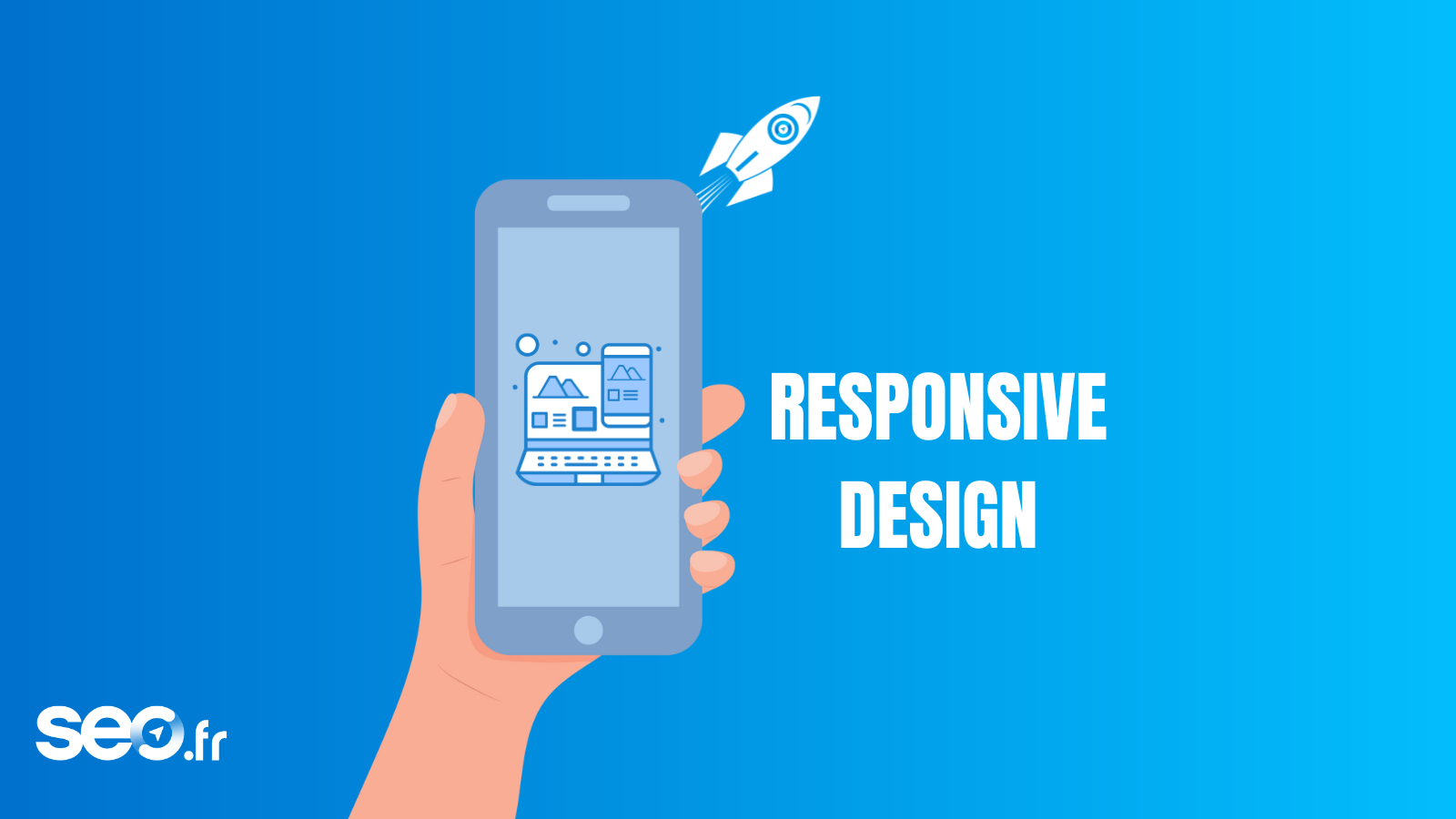What is the definition of Responsive web design?
Responsive Design, or more precisely Responsive Web Design (RWD), is a digital interface design technique that automatically adapts the display of any page on a site to the screen size of the terminal reading it. It is different from Adaptive Design, although both concepts aim to improve the mobile usability of a website.
The mobile compatibility of a website is not only essential to the user experience, but is also taken into account in natural search engine optimization.
It is therefore an essential design method for all websites, and we’ll explain why.

Introduction to responsive design
Self-adaptive web design is the expression that best explains this technology for displaying websites on mobile devices. The aim, of course, is to make it easier for web users to read and navigate, whatever type of device they are using.
The challenge for any website wishing to remain competitive is to adapt to new uses. Responsive design is part of a wider strategy to improve the user experience, which is essential if you want to rank well in search results.
This solution, which can be summed up by the expression “Mobile first”, is a response to the current trend for Internet users to use more and more mobile devices, and has been made possible thanks to CSS Media Queries. Whatever the user’s screen, responsive design adapts the layout of the site being viewed. On a smartphone, tablet, netbook, connected TV or simply a computer, the page appears complete and ergonomic.
There is a rule that web designers can use to easily manage the creation of this design. This involves starting with a 320 px display and then moving up to higher and higher resolutions.
Need a website?
Géraldine can help
5 years’ expertise in website creation

Web responsive design: how does it work?
To benefit from all the advantages of RWB, web designers need to take great care when setting it up. A site designed in Responsive Web design meets a certain number of requirements and must be designed before it is implemented in the interface of your CMS.
Here are the main steps to follow:
- An adapted style sheet thanks to CSS3 Media Queries (responsive breakpoints) ;
- A single HTML code for desktop and mobile versions;
- Fluid content architecture;
- Adaptive images (size, pixels, resolution, etc.).
Responsive Web Design has definite advantages, but also one major drawback
The advantages of RWB are considerable, at least as long as the web designer gets the design right, in other words, if he takes care of the background of his pages, anticipates user behavior, takes into account the functionalities of the various touch terminals and knows how to exploit the trend towards higher resolutions. Both the simple Drupal V8 and the powerful version 3.8 of the WordPress CMS are at your service to achieve this.
To create a website that adapts to all displays, all you need to do is develop a single HTML code. From the user’s point of view, the positive ergonomic experience is obvious. However, there is no such thing as perfection, since this ability to adapt to mobile screens is accompanied by a reduction in page display speed. This is because the RWB has to load the entire CSS file.
Although this degradation is minimal, it can be sufficiently penalizing for certain mobile applications to justify the choice of a solution other than Responsive Design. There is, however, an option for the site creator to allow certain content elements to appear only on resolutions higher than those of smartphones to get around this kind of problem.
It should also be noted that this page load time has very little impact on positioning in terms of SEO, but is very important for mobile users.
Why use responsive design in a mobile web strategy?
Why use responsive design in a mobile web strategy?
Keeping up with and adapting to web trends is essential for any company with a presence on the web. Today, it’s hard to imagine an e-commerce site without responsive design, but RWD is beneficial to all types of website.
If the work is well done, the website interface is readable and adapts automatically on all terminals without the need for zooming, even on the smallest screens. This is an assurance in terms of user experience and SEO performance. Mobile browsing is smoother, with content (text and media) shrinking and expanding at will without changing. It’s even possible to hide content, which will then only appear on a desktop display.
- Optimal adaptation of site display. Less restrictive to implement than a mobile application, mobile design provides a perfect user experience.
- Increased conversion rate and reduced bounce rate: mobile users are in a hurry and demanding, so they won’t waste their time on a site that isn’t ergonomic or mobile-friendly.
- Improved referencing: RWD is taken into account by search engines in their mobile-first indexing system (googlebots give priority to sites with a responsive design).
- Trendy ergonomics: more than ever, it’s vital to keep up with the new habits of web users.
- Highly profitable return on investment: a modest investment for a sustainable increase in your sales.









